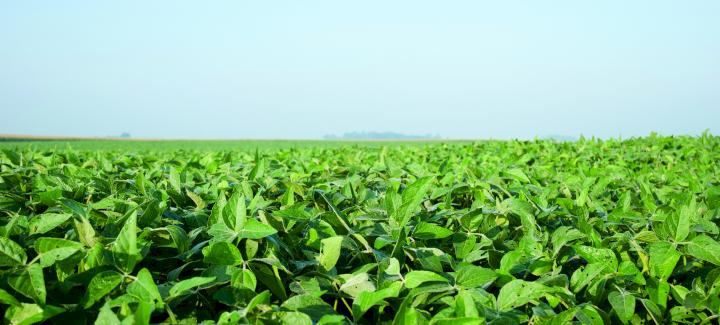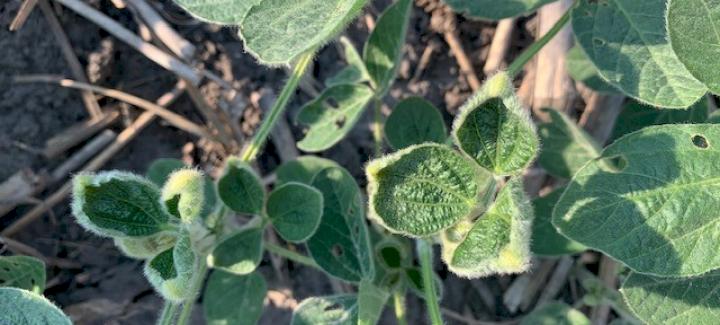While harvest season is underway in parts of the south and is just around the corner for the Corn Belt, growers aren’t out of the weeds when it comes to diseases that can impact yield. When combined with the right conditions, late-season corn diseases can decrease the quality and amount of grain and harvestability, so it’s important to continue scouting up until harvest to be on alert for affected areas. Here are some late-season corn diseases to look out for in August.
Tar spot is a newer disease that continues to spread across the Corn Belt. First discovered in the United States around 2015, this disease — which can overwinter in the ground on infected crop residue — can also spread via wind and gusty rains. It favors cool, humid and wet conditions. Tar spot is caused by a fungus called Phyllachora maydis. It appears as raised black dots called stromata, which can appear on the leaves, stalks and husks of the plant. It’s often accompanied by fish-eye lesions, which are tan halos that surround the stromata. Tar spot can be confused with other pathogens, so it’s important to get a diagnosis from an agronomist or laboratory specialist to confirm. Unlike corn rust, tar spot fungus stromata cannot be rubbed off. Tar spot can lead to poor grain fill and stalk rot and lodging issues, which can be detrimental to a clean harvest and yield.
Stalk rots are environmental and include gibberella, fusarium, diplodia and charcoal rots, to name a few. Signs of stalk rot may not show up until later in the season but are usually exacerbated by hot conditions in both wet and dry environments. The biggest indicator of stalk rot is brittle stalks. Some of the bacteria may form different colored fungus on the stalks as well. Stalk rot can lead to weakened plants and reduced grain fill as it hinders the plants' ability to uptake water and nutrients. Brittle stalks can also lead to lodging, which makes it difficult to harvest. It’s recommended to apply fungicides early to mitigate stalk rots around the V6-V8 stages.
Ear molds are environmental and can be caused by the same pathogens that cause stalk rots, such as gibberella, fusarium, diplodia and aspergillus. Symptoms include different variations and colors of mold on the ear. For example, gibberella mold is commonly red or pink in color, fusarium can be white to pink, diplodia can be white with black fungal spots and aspergillus is an olive-green mold. It’s important to note that there is some hybrid resistance to ear molds. The best way to prevent pathogens like ear molds, which can significantly reduce the quality of grain, is through fungicides. The pathogens causing the rot can continue to grow after harvest, so having the right storage available is essential if you plan to wait to take it to the elevator. Certain ear rots can also produce mycotoxins, which can affect livestock health.
Mitigation strategies are essential to protect your crops from these late-season diseases. Strategies can include fungicides, which your crop may still benefit from until the R3 stage; tillage to help break up the infected residue; crop rotation, which can keep the disease at bay as many of these diseases are only prevalent in corn; and investing in a hybrid that contains resistance to whichever disease you are tackling this year so that you're protecting your crop next year.
When in doubt, contact your local Stine rep for guidance on late-season corn diseases.
![YIELD[+]](/images/site/global/logos/yield-plus.png)




